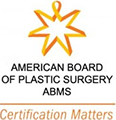AcCELLerate: An Innovative New Skin Rejuvenation System
November 26, 2014
ant-aging treatments, Atlanta plastic surgeon, Atlanta plastic surgery, looking younger, Rapid City cosmetic surgery, restoring facial volume
Last month in Chicago, at the annual meeting of the American Society of Plastic Surgeons and The Plastic Surgery Foundation, we had the opportunity to unveil a groundbreaking new facial rejuvenation process, the culmination of years of research and development. This process, which was the winner of the Plastic Surgery Foundation’s “Shark Tank” competition, should allow us to harness the regenerative power of adult stem cells to safely and effectively alleviate the signs of facial aging with a simple, minimally invasive procedure.
Many commercially available cosmetic products and serums promise to give you rejuvenated, younger-looking skin, and while they may achieve some degree of superficial success by moisturizing and filling in surface imperfections, creating the illusion of a smoother, more even skin tone, they largely fail to address the underlying causes of facial aging. As we age, skin begins to lose volume and elasticity so that sagging folds and wrinkles begin to appear. This process can, to some degree, be counteracted by stimulating the production of collagen and elastin, which is exactly what many over-the counter cosmetic products claim to do. However, these vital proteins are produced deep in the skin’s dermis, and these deep layers of skin are completely protected by the stratum corneum, the skin’s outermost layer. The stratum corneum exists, in part, to prevent any foreign substance from being absorbed into the body, and so, for any topically applied products to affect real and lasting change, they must be able to penetrate past this protective covering and into the deepest layers of the dermis. Most can’t, and this is why most topical serums so often fail to live up to their claims.
Our new facial rejuvenation system is based on the idea that collagen and elastin production can be stimulated by exposing the deep skin tissues to stem cells. The human body is composed of about two hundred different kinds of cells: skin cells, muscle cells, fat cells, blood cells, nerve cells, etc. Each has a highly specific structure and function, but all started out as rapidly reproducing, unspecialized stem cells. These stem cells form a sort of building material for the body. They are present in large concentrations within developing embryos, but also exist throughout the adult body, particularly in the fat and blood marrow, where they can be activated when the body needs to produce new tissue to heal from an injury. In fact, it has been proven that adult stem cells taken from the fat and bone marrow, along with the growth factors they release, can greatly accelerate wound healing and improve collagen production. Theoretically, they can also re-stimulate the skin’s natural growth processes, effectively counteracting the signs of facial aging, like wrinkles and sagging, by regenerating fresh and vital new skin. However, these complex proteins are simply too large to get through the stratum corneum, and can only function if exposed to the deeper tissues where the natural process of skin regeneration occurs.
The AcCellerate skin rejuvenation system is a patent-protected process that revolutionizes skin resurfacing by combining it with the most promising applications of stem-cell rejuvenation. It works by isolating stem cells from the tissue harvested during a patient’s liposuction procedure. The patient then undergoes a laser skin resurfacing procedure that effectively removes the outermost layers of the stratum corneum and leaves the inner dermis exposed. A concentrated serum composed of the patient’s own active stem cells and growth factors is then immediately reapplied to the exposed dermis. Stem cells taken from the patient’s own body are safer and far more effective than similar cells taken from other sources and can potentially achieve excellent long term results. Moreover, the patient can also enjoy the added benefit of liposuction to remove unwanted fat. Look for more information about the development of this exciting new technique in the coming months.
If you have any questions about any of the treatments that I offer, please contact us today to schedule a consultation. Additionally, Atlanta Plastic Surgery, P.C. provides a variety of options for financing, including CareCreditSM, to assist you. Don’t forget to connect with me, Dr. Hunter Moyer, on Facebook, Twitter, and Google+ for the latest plastic surgery news.









